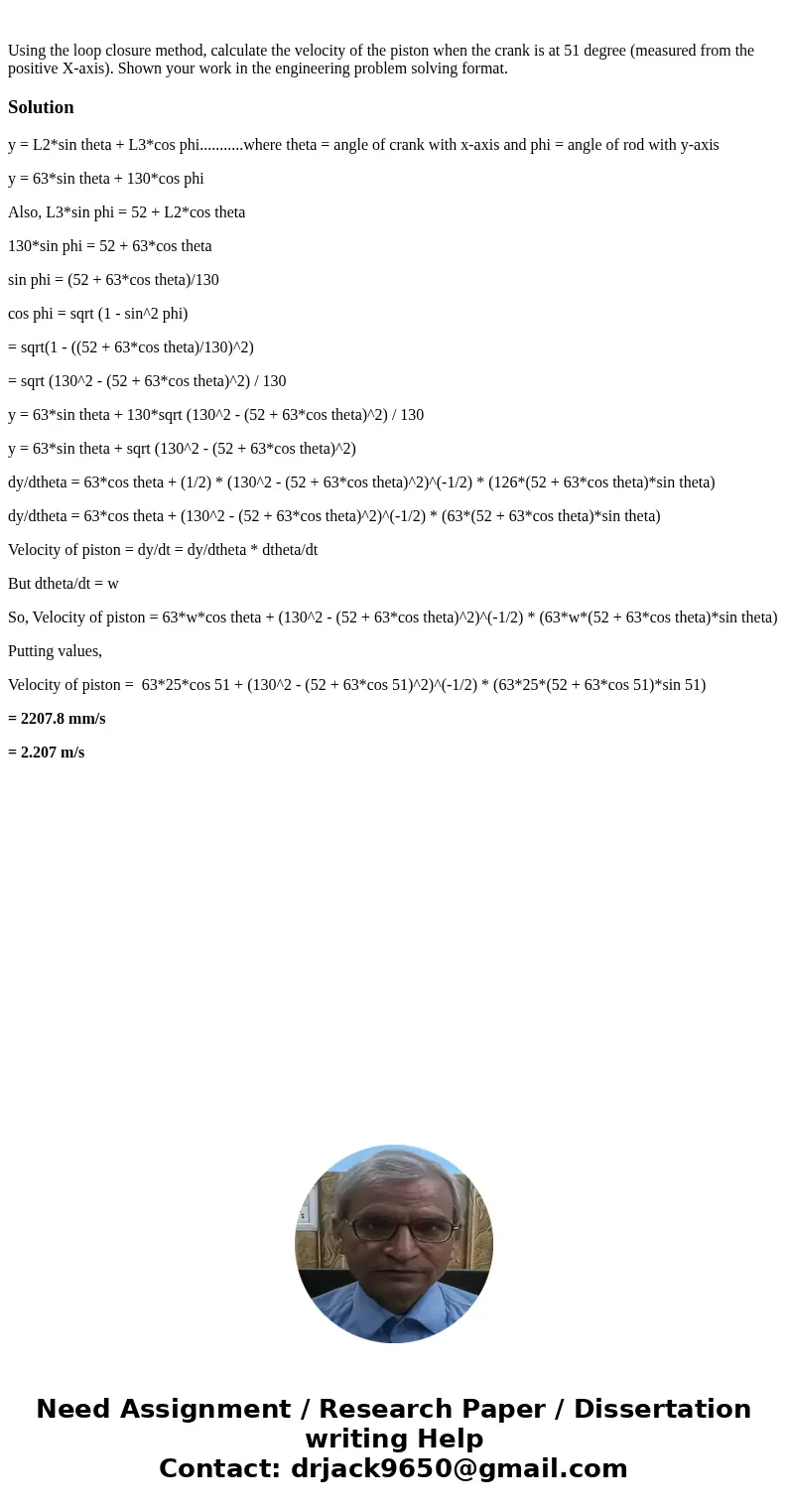Using the loop closure method calculate the velocity of the
Solution
y = L2*sin theta + L3*cos phi...........where theta = angle of crank with x-axis and phi = angle of rod with y-axis
y = 63*sin theta + 130*cos phi
Also, L3*sin phi = 52 + L2*cos theta
130*sin phi = 52 + 63*cos theta
sin phi = (52 + 63*cos theta)/130
cos phi = sqrt (1 - sin^2 phi)
= sqrt(1 - ((52 + 63*cos theta)/130)^2)
= sqrt (130^2 - (52 + 63*cos theta)^2) / 130
y = 63*sin theta + 130*sqrt (130^2 - (52 + 63*cos theta)^2) / 130
y = 63*sin theta + sqrt (130^2 - (52 + 63*cos theta)^2)
dy/dtheta = 63*cos theta + (1/2) * (130^2 - (52 + 63*cos theta)^2)^(-1/2) * (126*(52 + 63*cos theta)*sin theta)
dy/dtheta = 63*cos theta + (130^2 - (52 + 63*cos theta)^2)^(-1/2) * (63*(52 + 63*cos theta)*sin theta)
Velocity of piston = dy/dt = dy/dtheta * dtheta/dt
But dtheta/dt = w
So, Velocity of piston = 63*w*cos theta + (130^2 - (52 + 63*cos theta)^2)^(-1/2) * (63*w*(52 + 63*cos theta)*sin theta)
Putting values,
Velocity of piston = 63*25*cos 51 + (130^2 - (52 + 63*cos 51)^2)^(-1/2) * (63*25*(52 + 63*cos 51)*sin 51)
= 2207.8 mm/s
= 2.207 m/s

 Homework Sourse
Homework Sourse